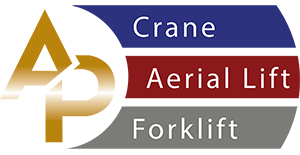
Operating a forklift under the summer sun is typically a bustling period for forklift drivers. With an upsurge in orders and an increase in overtime hours, the summer season brings forth unique demands and challenges, particularly when it comes to outdoor operations. To ensure the well-being of all employees, it becomes imperative to pay meticulous attention to detail and adopt safety-conscious practices that mitigate the risk of accidents.
As a forklift operator, your company prioritizes your safety and aims to shield you from any potential health hazards. Nevertheless, there are several proactive measures you can take to protect yourself from the challenging conditions that arise when working in the scorching sun and warm weather during the summer season.
Heat Dangers for Forklift Operating in the Sun
Operating in high temperatures poses risks to the body's internal temperature regulation, perspiration, and blood circulation to the skin. When exposed to a hot environment, the body's ability to maintain its normal temperature is compromised, making it more difficult to dissipate heat effectively.
When blood brought to the skin fails to release its heat, sweating becomes the primary mechanism for the body to eliminate excess heat. However, sweating is only effective when the ambient moisture level is sufficiently low for the sweat to evaporate, and when the body replenishes the salts and fluids lost through perspiration with proper hydration and nutrition.
If the body is unable to dissipate the excess heat, both internal temperature and heart rate increase. This can lead to severe consequences such as heatstroke, heat rash, nausea, dizziness, lack of concentration, and in extreme cases, even death.
If you anticipate working in hazardous heat conditions outdoors during the summer, it is crucial to adequately prepare yourself and actively take the necessary steps to ensure hydration, nourishment, and maintaining a cool body temperature while operating a forklift.
The risk for Heat Hazards
Employees who are frequently exposed to the outdoors without sufficient shade, wearing non-breathable clothing and hats, are among the individuals most susceptible to heat hazards.
Even if your work primarily takes place indoors, it's important to note that warehouses and other poorly ventilated or inadequately air-conditioned environments can become uncomfortably warm and humid, potentially leading to heat-related illnesses. This risk becomes even greater when you're exposed to radiant heat sources or handling hot objects.
Several occupations are susceptible to various hazards, including:- Iron and steel foundries
- Nonferrous foundries
- Brick-firing and ceramic crops
- Glass manufacturing plants
- Rubber product mills
- Electrical utilities, including boiler rooms
- Food canneries
- Chemical plants
- Mining sites
- Smelters
- Steam lines
- Construction work
- Farm work
- Gas and oil well operations
- Asbestos removal
- Landscaping
- Hazardous waste site activities
Forklift Safety Tips for Operating in the Sun
In need of forklift safety tips for operating under the sun? Whether you operate a forklift at home or work as a forklift driver for a company, ensure your safety this summer by following these valuable guidelines:
1. Stay Hydrated:
Keep a water bottle within reach. Rising temperatures increase the risk of cramps and dehydration. To operate the forklift effectively, it's essential to be physically prepared. Staying hydrated is crucial during the hot summer days.
2. Don't Skip Maintenance:
Sweltering conditions require extra attention for your forklift. Overheating is a common issue, so make sure to adhere to your maintenance program. Nothing disrupts your shift more than a malfunctioning forklift.
3. Take Regular Breaks:
Although it may seem counterproductive, as a forklift operator, you won't perform well if you're dehydrated, overheated, or unable to focus on tasks at hand. During your workday, take more frequent breaks to rest in the shade, hydrate, and have a small snack to maintain fluid levels and prevent exhaustion.
4. Protect Yourself from the Sun:
For outdoor workers, summer-long protection is essential. Spending prolonged hours under the sun can take a toll on your well-being. If you work in settings like shipyards, docks, or other outdoor environments, safeguard yourself with appropriate clothing, sunscreen, or shade coverings.
5. Develop Heat Tolerance:
Employers should prioritize safety and prevent injuries and illnesses by allowing new and returning employees to gradually acclimate to working in the heat. Building tolerance and gradually increasing workloads can help mitigate the risks.
6. Monitor Signs of Heat-Related Illness:
The best way to prevent heat-related illnesses and injuries is to closely monitor and identify the early signs and symptoms. Prompt attention and intervention can make a significant difference in maintaining a safe working environment.
With our forklift operator certification program, you'll get a competitive advantage. Learn the skills and recognition required to flourish as a qualified forklift operator, opening doors to a variety of work options in the material handling industry.
Monitor Signals Of Heat-Related Disease
The optimal strategy for preventing heat-related illnesses and injuries on a worksite is to diligently monitor the early signs and symptoms of heat-related distress. By closely observing these indicators, prompt action can be taken to ensure the well-being and safety of all individuals involved.
The most commonly observed symptoms include:- Confusion
- Headache
- Nausea
- Dizziness and weakness
- Irritability
- Lack of concentration
- Excessive sweating
- Muscle cramps
- Loss of consciousness
- Seizures
Obtain Your Forklift Operator Certification!
Improve your knowledge with our comprehensive forklift teacher training program. Learn how to lead effective training sessions and ensure workplace safety while setting the bar for skilled forklift operators.
